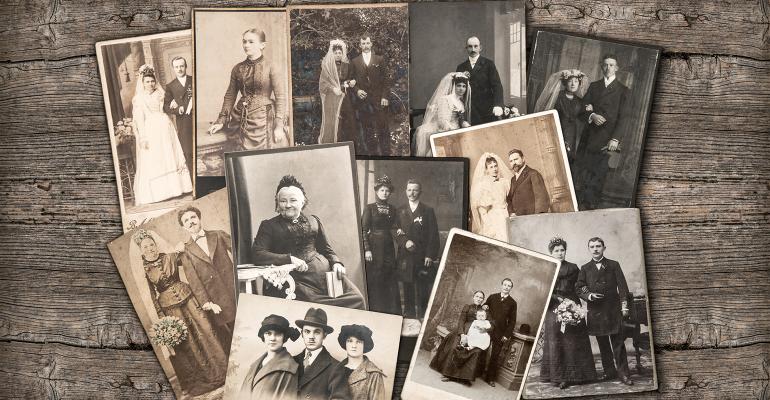While it might seem paradoxical, when we think of our family’s future, and the hope of perpetuating the values and accomplishments that mean the most to us, we must look backward to the history of our family. Because it’s difficult to know where we’re going as a family without understanding where we’ve been, a deep, shared and enduring understanding of our family history makes it more likely that we will share a future together as a family. Visual images, such as portraits, photographs and artwork, can be extremely powerful tools for illustrating a family’s story across generations.
An understanding of family history may provide direction, while strengthening core values
The cynics (or realists, depending upon one’s geopolitical outlook) may say that, in the context of world history, the only thing we learn from history is that we learn nothing from history. It does not have to be that way, and often is not, in families. Families can and should celebrate their history and seek to learn from it: where did we come from, how did we get here, what challenges did we have to overcome along the way, what strengths and opportunities did we leverage, how are we similar to, or different from, our ancestors? The lessons we learn from our family history—positive or negative—can help us shape our responses to current challenges or help us envision a path forward. For example, a family who learns that environmental stewardship is a significant theme often sounded in their history may decide to build on that history by directing a substantial share of their philanthropic dollars to charities dedicated to wildlife preservation.
Even if there are no direct lessons we can draw from our history as a family, simply knowing and sharing it can be immensely valuable. In fact, knowing and understanding our family history and ensuring that our descendants understand it as well is one of the principal strategies we should employ when our goal is to improve the odds that our family will be successful and remain connected over multiple generations. When we lose sight of what we share as a family, it becomes a good deal easier for members of a family to view one another as adversaries, either informally or in court. Conversely, a deep and shared understanding of our family history often teaches us that the things we have in common are more important, deeper and more lasting than the things that momentarily divide us. And that it’s worth working to bridge that divide so that we continue to have a history to share and a future to build together. When we have that shared understanding, it becomes harder—not impossible, but harder—for us to square off against one another either interpersonally or in court.
Photography and visual art breathe life into family histories
Instilling an understanding and appreciation of family history can be difficult when ancestors feel like strangers from another era. But families can use storytelling and visual art to foster emotional connections to relatives they will never meet.
Anyone who has ever marveled at their resemblance to a photograph of a great-great-grandparent can understand why images are such a powerful tool for connecting families. Portraits, photographs, film and video all facilitate storytelling, which can reinforce those values that mean the most to a family—while developing an understanding of why they matter so deeply. Photographs of a dedicated conservationist ancestor riding horseback on pristine mountain trails can illustrate to current and future generations why the environment is so important to their family, and how far back into history those values reach, while deepening our emotional commitment to continually embrace those values.
Documenting family history is a powerful and worthwhile activity
Establishing a family archive or producing a documentary on family history is one of the most powerful and meaningful exercises relatives can do together. And yet, as renowned portrait photographer Timothy Greenfield-Sanders recently observed at a Morgan Stanley client event focused on these themes, today we take so many pictures that cataloguing and storing them effectively can seem like an overwhelming task. Families that want to prioritize a commitment to family history should appoint a family archivist: one person who is responsible for collecting and managing photographs, artwork, documents, etc. Alternatively, or in addition, families may want to engage a professional family historian.
Financial advisors can encourage clients to cultivate appreciation for family history
Financial advisors can help high-net-worth families get started exploring and honoring their family histories by asking questions like, “Do you know your family history?” “Do your kids know it?” Involving not just principal clients, but the entire family, in these conversations will deepen their significance. Last but not least, engaging the whole family in this meaningful journey enables financial advisors to cultivate relationships with members of the next generation, who will then be more likely to regard them as the family’s financial advisor, and not just Mom or Dad’s wealth manager.
Glenn Kurlander is managing director, head of Family Governance and Wealth Education at Morgan Stanley Wealth Management.





